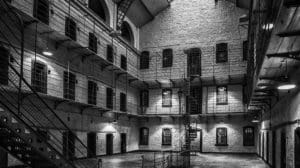Mystical Creatures in Global Folklore Compared: A Cross-Cultural Analysis

Updated On: April 22, 2024 by Salma Ihab
Mystical creatures in global folklore serve as an integral thread that weaves cultures together through shared narratives and distinct local legends. These beings, ranging from European dragons to Japanese yokai, embody the values, fears, and aspirations of societies, illustrating the universality of the human imagination. Different regions offer their unique mythical menageries, yet they often explore similar themes of heroism, morality, and the supernatural, reflecting the essence and influence of these fantastical entities on cultural paradigms.

The stories we tell of gryphons, leprechauns, and other such mythical denizens extend beyond mere entertainment; they act as symbolic figures that hold significant meaning within their respective cultural contexts. They may serve as cautionary tales, represent natural phenomena, or exhibit the virtues and vices recognisable to the human condition. With the advent of modern media, these creatures have transcended their folkloric origins, assimilating into contemporary narratives and fuelling the imagination of new generations. Their enduring legacy underpins the power of myth to not only depict but also shape civilisation’s collective consciousness.
Table of Contents
The Essence and Influence of Mystical Creatures in Global Folklore

Mythical creatures serve as a testament to the power of the human imagination. Across cultures and through the ages, these beings have filled the pages of folktales and fairy tales, becoming symbols with enduring appeal. They embody our deepest fears, greatest hopes, and the unexplained mysteries of the world.
- Storytelling has always been the vessel through which legendary creatures reach our ears. As reflections of the values and lessons of culture, these entities act as both entertainment and moral compass.
- Legendary creatures draw from the natural and supernatural elements of their origins. A dragon represents the primal forces of nature, while a fairy may echo the delicate balance of the unseen world.
The tapestry of global folklore is rich, with imaginations giving birth to creatures as diverse as the environments from which they spring. Each culture has its guardians and monsters, from the mischievous leprechauns found in Irish folklore to the majestic dragons of East Asian lore.
| Culture | Creature | Significance |
|---|---|---|
| Irish | Leprechaun | Trickster |
| Norse | Troll | Isolation, Strength |
| Greek | Centaur | Dual nature of man |
| East Asian | Dragon | Power, Good fortune |
Mythical creatures also influence our modern media, psychology, and arts. The resurgence of interest in them continues as we seek to reconnect with the enchantment of our past and the mysteries that lie beyond our understanding. Our fascination with these creatures encourages us to explore the unknown, reminding us that there are more things in heaven and earth than are dreamt of in our philosophies.
Mythical Beasts of Europe: Dragons to Leprechauns
In this exploration, we unveil the rich tapestry of European folklore, from the fierce dragons of legend to the enigmatic leprechauns of Ireland.
Dragons: Fire-Breathing Symbols in European Lore
Dragons have long captured the European imagination, embodying power and mystery. These mythological beasts are often associated with fire-breathing and symbolise potent forces, both protective and destructive. In various European cultures, dragons are revered as guardian entities or feared as evil adversaries.
The Leprechaun: Ireland’s Mischievous Fairy
Leprechauns, a staple of Irish folklore, are small, bearded figures known for their craftiness and elusive nature. They have become iconic symbols of Ireland, often depicted mending shoes and partaking in mischief, guarding their coveted pots of gold.
Banshee: The Irish Herald of Impending Death
In Irish legend, the banshee is a ghostly figure whose mournful wail is said to foretell death. This spectral being is deeply ingrained in Irish myths, often described as a sign of a forthcoming passing within a family.
Griffins and Basilisks: Guardians and King of Serpents
Griffins, with their lion bodies and eagle heads, are often seen in Greek mythology as powerful guardians. Meanwhile, the basilisk, recognised as the king of serpents, holds a feared place in European lore with its deadly gaze and venomous breath. These creatures are symbolic of might and peril.
Fantastic Creatures of the East: Chinese and Japanese Mythology
In our exploration of global folklore, we encounter a rich tapestry of mystical beings, especially within Chinese and Japanese mythology. These creatures embody the values, fears, and wishes of the cultures they come from, representing power, wisdom, and the supernatural. Let us take a closer look at some of these mythical entities that have captivated imaginations for centuries.
Chinese Dragons: Power and Wisdom
Chinese dragons are venerated symbols of strength and prosperity. Unlike their Western counterparts, often associated with destruction, these serpentine creatures are seen as benevolent and wise. They are thought to have control over water, rainfall, typhoons, and floods. Historically, the dragon was also a symbol of the Emperor of China, representing his imperial power and authority.
Qilin and Phoenix: Auspiciousness and Rebirth
The Qilin, a creature with a deer’s body, an ox’s tail, and hooves like a horse, is said to appear with the imminent arrival or passing of a sage or illustrious ruler. It is a good omen that brings serenity and prosperity. In contrast, the Phoenix is a universal symbol of rebirth and immortality. In Eastern folklore, it is associated with high virtue and grace, its appearance indicative of a harmonious era.
Japanese Kappa and Tengu: River and Mountain Spirits
In the waterways of Japan, one might encounter the Kappa — mischievous water spirits with a penchant for challenge and cucumbers. Despite their child-like appearance, these beings are powerful and should be approached with caution. Meanwhile, the Tengu dwell in the mountain forests. These bird-like creatures are skilled warriors, often depicted with both human and avian characteristics. They’re known to be protectors of the natural world, sometimes punishing those who disrespect it.
Through these entities from Chinese and Japanese folklore, we witness a fascinating world where the boundaries between the natural and supernatural blur, offering us insights into the cultural landscapes that birthed such rich lore.
Mystical Creatures of the Americas

The American continents are replete with tales of elusive and awe-inspiring mystical creatures that have been passed down through generations. From the voracious Chupacabra to the mighty Sasquatch, these legendary beings continue to ignite the imaginations of both the young and old.
Chupacabra and Sasquatch: Elusive Beasts
The Chupacabra, a creature of what might be deemed horrific fascination, is infamous throughout the Americas for its alleged attacks on livestock. Described as a creature with leathery skin and sharp spines running down its back, the Chupacabra has become a significant figure in contemporary folklore, especially within Puerto Rico and Mexico. Its name translates to ‘goat-sucker’ in Spanish, illustrating the terror it represents to farmers as tales describe it consuming the blood of domestic animals.
Moving north, the Sasquatch, also known as Bigfoot, holds a prominent place in North American lore, particularly in the United States and Canada. It is said to be a large, bipedal human-like beast, dwelling in dense forest regions. Reports and supposed evidence of Sasquatch sightings continue to accumulate, fueling scientific debate and public curiosity.
Thunderbird and Wendigo: Spirits of Air and Earth
In contrast to the menacing Chupacabra and Sasquatch, the Thunderbird is a powerful spirit in the form of a gigantic bird, deeply rooted in Native American mythology. It’s believed to control the weather, especially thunderstorms, and is often depicted with spread wings and eyes that shoot lightning. Respected and revered, the Thunderbird signifies strength and nobility, and it is thought to protect humans from evil spirits.
On a more sinister note, the Wendigo emerges from the cold, northern forests of Canada and the United States. Stemming from Algonquian folklore, the Wendigo is often associated with winter, the north, and coldness, as well as with famine and starvation. This gaunt, cannibalistic spirit is symbolic of both human greed and nature’s harshness, evoking cautionary tales against excessive consumption and environmental disrespect.
Our narratives of the mystical creatures that roam the Americas are as diverse as the landscape itself, mirroring a rich tapestry of cultural and spiritual beliefs across these lands. By exploring these tales, we engage with a vibrant part of our shared heritage that continues to shape our understanding of the natural—and supernatural—world.
Norse and Greek Pantheon: From Fabled Centaurs to Mighty Minotaurs
The Norse and Greek pantheons are reservoirs of mythical creatures that have captured human imagination for centuries. These folklore entities, ranging from the ice giants of the Norse to the half-human, half-horse centaurs of Greek mythology, exhibit the ancients’ vibrant storytelling traditions.
Norse Mythology: Creatures of Ice and Fire
In the chilling realms of Norse mythology, beings of ice and fire hold great prominence. Frost Giants, known as Jötnar, embody the force of nature’s fury and are often in opposition to the Aesir gods. Notably, the Midgard Serpent, Jormungandr, a child of Loki, is destined to fight Thor during Ragnarok. Born of fire are the Fire Giants, residing in Muspelheim, one of the Nine Worlds, ruled by their fierce leader, Surtr, who is prophesied to engulf the world in flames at the end of days.
When discussing these entities, it’s impossible not to mention Fenrir, the monstrous wolf destined to break free from his binds and swallow Odin whole during the prophetic end times. He’s another progeny of the trickster god Loki, his tale is one laced with the gods’ fear and attempts to prevent the foretold doom. Fenrir represents the uncontrollable nature of chaos and the inevitable decay of order.
Creatures of Ancient Greece: From Centaurs to Cerberus
The rich tapestry of Ancient Greek mythology boasts a myriad of creatures. Among them are the Centaurs, horsemen known for their dual nature, embodying both the civilised and the wild aspects of humanity. Tales of these creatures often depict them as being caught between two worlds, a concept poetically conveyed in stories such as the battle with Lapiths.
Another iconic beast from Greek legend is the Minotaur, a testament to the complex lineage of the gods and their intermingling with mortals. This formidable creature, with the body of a man and the head of a bull, was confined to the Labyrinth constructed by Daedalus, highlighting ancient themes of cunning over brute strength.
Moreover, the multi-headed Hydra lurks in the waters, a monstrous serpent with the terrifying ability to regrow two heads for each one cut off, emblematic of the Greeks’ fascination with the idea of an undefeatable foe. On the other hand, Cerberus, the monstrous three-headed dog, stands guard at the gates of the Underworld, ensuring that the dead may enter but never leave, epitomising the ancient Greeks’ views on death and the afterlife.
These figures from both Norse and Greek mythologies reveal a world where humanity grappled with elemental forces, moral dualities, and the unfathomable nature of existence, with each creature symbolising a facet of the human condition as perceived by our ancient ancestors.
Mythic Beasts and Deities from Mesopotamia to Egypt
In this section, we explore the fascinating creatures and gods that adorned the mythology of ancient civilisations spanning from Mesopotamia to Egypt. Their myths carry rich narratives of power, morality, and the afterlife.
Behemoth and Manticore: Middle Eastern Monsters
In the lore of the Middle East, mighty creatures such as the Behemoth symbolised overwhelming power and strength, often depicted as an immense and fearsome beast. Similarly, the Manticore, a mythical creature with a human head, lion’s body, and a scorpion’s tail, was known for its ferocity and prowess. Tales of these monsters served not only to convey moral lessons but also to offer explanations for the unknown.
Anubis and Ammit: The Egyptian Afterlife
Turning to Egyptian mythology, the gods Anubis and Ammit were integral to the concept of the afterlife. Anubis, the jackal-headed god, was the guardian of the dead and presided over mummification. He was the one to ensure the safe passage of souls into the afterlife. On the other hand, Ammit, the ‘Devourer of the Dead’, was a fearsome deity with the head of a crocodile, the torso of a lioness, and the hindquarters of a hippopotamus. Souls weighed unworthy by the scales of Ma’at faced being consumed by Ammit.
In our exploration, we have travelled through an array of legendary beings, from the Mesopotamian mythical creatures that people once believed roamed the Middle East to the revered and dreaded deities of Egypt. Each entity carries with it a story that has been retold through generations, reflecting the values, fears, and aspirations of the civilisations that worshipped them.
The Role of Mythical Creatures in Various Cultures
In various cultures, mythical creatures have served myriad roles, often embodying the values, fears, and aspirations of their respective societies. The classification of these beings ranges vastly, from benign entities to malevolent forces.
In Christian mythology, for instance, angels symbolise divine protection and guidance. Conversely, the dragon, representing chaos and evil, often appears as an antagonist to be vanquished in religious narratives. Such dichotomies are prevalent in the mythos, where creatures not only personify abstract concepts but also serve as moral compasses for believers.
Similarly, in Islamic folklore, beings like the Jinn, which can be benevolent or malevolent, reflect the dual nature of the spiritual realm, impacting the material world in various ways. They underscore the theme of unseen influence and the importance of piety.
Buddhist tradition also incorporates a host of mythical creatures. Creatures such as the Makara, ornately decorating temple walls, serve as guardians and protectors of sacred spaces. They are seen as manifestations of various qualities like strength and vigilance.
Jewish mythology speaks of creatures like Golems, which are animated beings created from inanimate matter, often task-driven and reliant on their creator. They highlight themes of control and the power of sacred words.
- Classification: This encompasses a wide array of beings, such as demons, faeries, and dragons.
- Religious Influence: Many creatures serve to instruct and reinforce religious tenets.
- Cultural Representation: They often take on characteristics emblematic of a culture’s identity.
To delve deeper into the rich tapestry of mythical beings in Irish folklore, a venture to Magical Folk: British and Irish Fairies offers an insightful perspective.
Our fascination with these mythical entities speaks volumes of our collective love for storytelling and the enduring power it holds in shaping our cultural heritage. It remains a testament to the universality of myth and its crucial role in cultural identity and spiritual instruction across myriad cultures.
Magical and Supernatural Creatures in Modern Media

Magical and supernatural creatures have long captured the human imagination, and this fascination continues in today’s modern media. These entities are no longer confined to old tales whispered by the fireside; they now thrive in the digital and virtual worlds of films, television, and books.
Films such as the Harry Potter series and The Lord of the Rings have brought a plethora of mythical beings to the forefront of popular culture. These creatures range from the wise and majestic phoenixes to the cunning and sometimes mischievous elves.
Television has seen a resurgence of interest in supernatural beings with shows like Supernatural, which delves deeply into folklore, bringing beings like werewolves and chimeras into living rooms around the world.
The world of books is no stranger to these creatures either. Authors continue to weave complex, fantastical worlds where creatures from mythology stand alongside modern-day heroes and villains. Series such as Percy Jackson reinterprets ancient myths for new audiences, placing beings like dragons in contemporary settings.
We must also look at the modern interpretations of these beings – a metamorphosis from their traditional roots to reflect current societal values and fears. Modern vampires, for example, often embody a nuanced blend of charisma and danger, reflecting complex themes of immortality and morality.
| Media Type | Examples | Creatures Featured |
|---|---|---|
| Films | Harry Potter, The Lord of the Rings | Phoenixes, Elves, Dragons |
| Television | Supernatural | Werewolves, Chimeras |
| Books | Percy Jackson Series | Dragons, Vampires |
Our exposure to these beings through modern media allows them to evolve, keeping them relevant and exciting in the collective consciousness. They prompt us to question the natural world and explore the boundaries of our reality.
Conservation of Mythology: Cryptids and Contemporary Legends

We find in the realm of folklore a fascinating array of cryptids: creatures of myth that tease the boundaries of the known and the unknown. The conservation of such folklore is not merely an academic pursuit; it is a cultural imperative that preserves our world’s rich tapestry of stories and beliefs.
Cryptids like Bigfoot, the Loch Ness Monster, and the Chupacabra inhabit our collective imagination and offer valuable insights into the way we interact with our natural world. These entities, despite their elusive natures, are keystones in the conservation of folklore, serving as icons that inspire both awe and intrigue.
Cryptid sightings are often rooted in Algonquian mythology, with creatures such as the fearsome Wendigo reflecting deeper moral and ecological narratives. The essence of these stories is not in their veracity but in their ability to convey powerful messages about respect for nature and the consequences of excess.
The leveraging of cryptids in conservation efforts has seen proponents argue that the intrinsic value of these legends helps protect and enhance biodiversity. It’s the interest sparked by these intriguing beasts that can lead to increased environmental awareness and action.
Moreover, urban legends serve as contemporary vessels for cryptid lore, often acting as modern reflections of ancient beliefs and fears. They are a testament to the endurance of these myths, evolving within our collective consciousness and remaining relevant in today’s rapidly changing world.
By fostering respect for these legends, we play our part in the greater mission of cultural preservation, ensuring that such tales continue to enliven discussions and enrich our global heritage.
Folkloric Creatures as Symbolic Figures
Folklore across the globe is enriched with creatures that carry a treasure trove of symbolism and moral teachings. These figures often embody cultural identities, offering windows into the values and beliefs of societies.
Faeries, for instance, frequently represent the powers of nature and the spirit world. Their mischievous and mysterious characteristics remind us of the unseen forces that can influence our lives.
The Nian, a beast from Chinese mythology, embodies obstacles and hardships; its annual defeat symbolises the overcoming of past challenges and the welcoming of a prosperous new year.
In contrast, the Siren of Greek mythology serves as a cautionary emblem of temptation and distraction, luring sailors to their doom with their enchanting music and voices as a warning against the seduction of superficial allure.
Anansi, the spider-trickster from West African tales, reflects the importance of wisdom and intelligence. His stories are instructional, imparting lessons on how to navigate a world filled with both opportunity and deceit.
The multi-headed hound Cerberus guards the underworld in Greek mythology, symbolising the vigilance and finality of death, yet also the possibility of protection and loyalty towards one’s realm.
These folkloric figures, whether they be from the ethereal realm of faeries or the dark depths guarded by Cerberus, weave together a fabric of stories designed to educate and reflect the diverse cultural tapestries from which they originate.
Frequently Asked Questions
In this section, we address several common queries about the rich tapestry of mythical creatures that populate global folklore. We’ll explore their shared characteristics, dive into ancient legends, and consider how these fantastical beings reflect the worldviews of diverse cultures.
What are the similarities and differences among mythical creatures from various global cultures?
Mythical creatures often embody the values, fears, and aspirations of a culture. For instance, many cultures feature dragons, which can represent power and wisdom, yet their depictions vary from benevolent guardians to menacing beasts.
Which are some of the most ancient mythical creatures encountered in global folklore?
Creatures like the Greek Chimera or the Egyptian Sphinx rank among the ancient mythical entities, symbolising mystery and challenging the hero’s strength and wit. The Kraken, a sea monster from Scandinavian lore, has been terrifying mariners since the sagas of old.
How do mythical guardian creatures differ across different cultural narratives?
Guardian creatures serve as protectors in many traditions. The Greek Cerberus guards the underworld, while in Japanese folklore, the shisa wards off evil spirits. Each serves a protective role but reflects its unique cultural context.
What common themes are present in the myths of different cultures regarding their mythical beings?
Themes of creation, morality, and natural phenomena frequently recur in myths. Creatures often personify elements like fire, water, or earth and can embody concepts of good versus evil, such as the Celtic stories that intertwine nature and magic.
Can you list some lesser-known mythical creatures that feature in global folklore?
Certainly. The Nuckelavee from Orcadian folklore is a skinless sea creature, and the Philippine Tikbalang, a horse-headed humanoid, are just a couple of the less commonly known entities that enrich global myths.
How does the concept of comparative mythology explain the recurring motifs in different cultures regarding mythical entities?
Comparative mythology examines these recurring motifs to uncover shared human experiences. Mythical creatures often represent universal concerns about life, death, and the natural world, transcending individual cultural boundaries.






